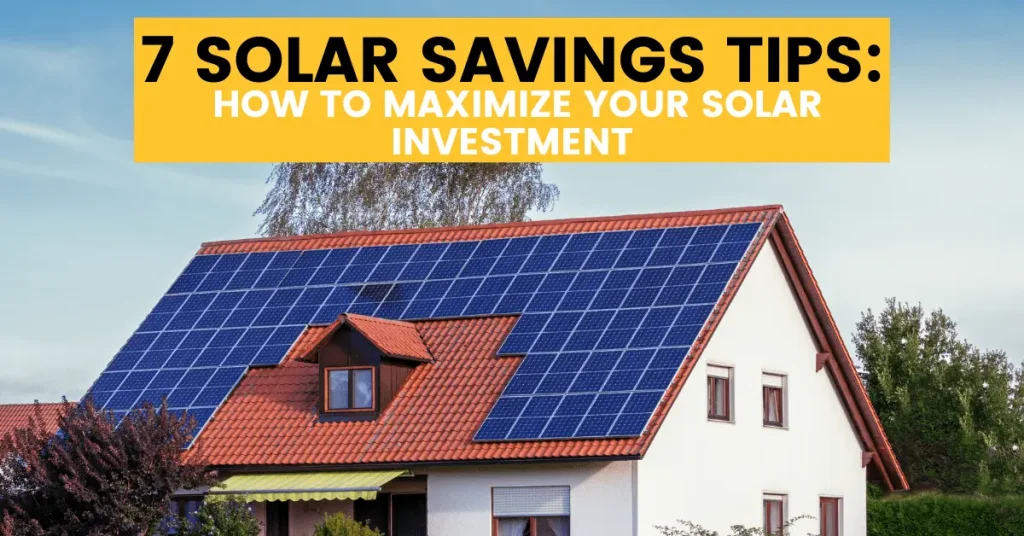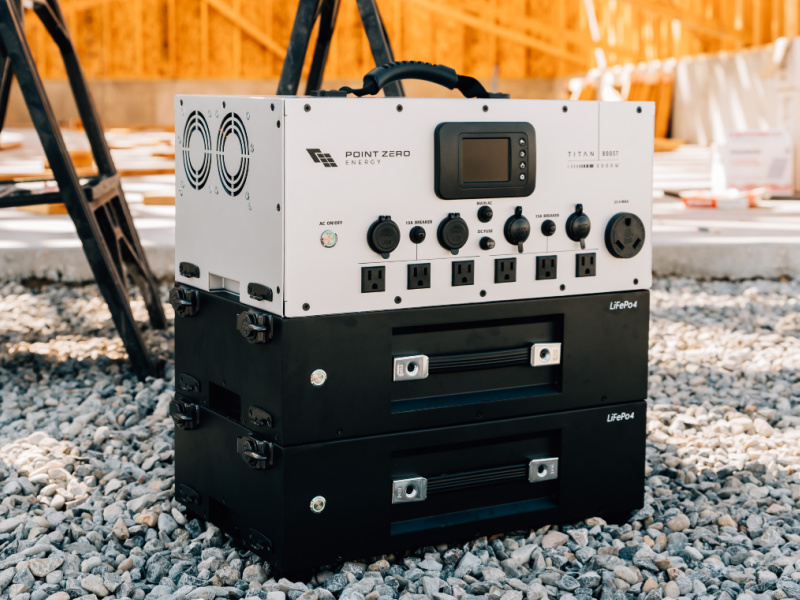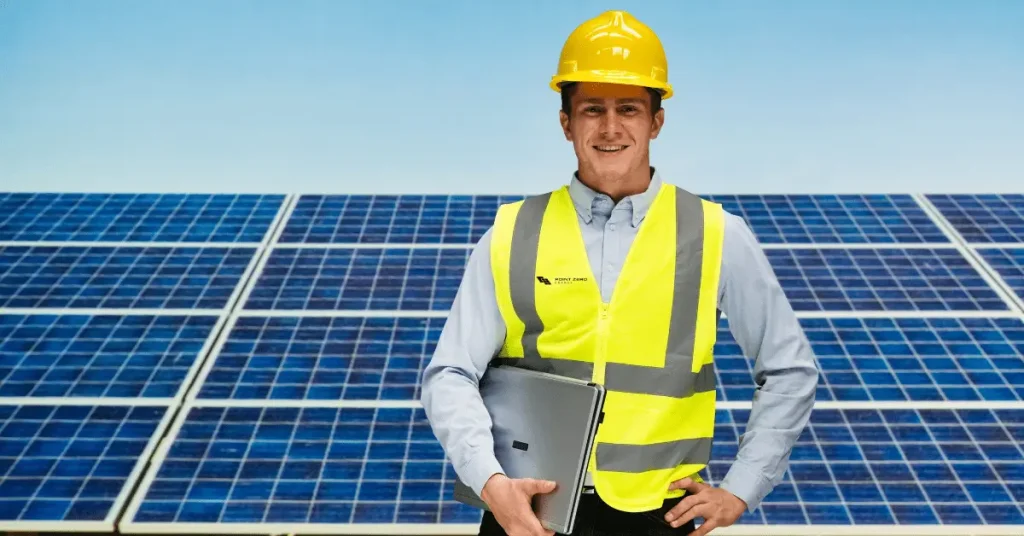With rising energy costs and the need to reduce carbon emissions, solar power has become a popular energy source for homeowners and businesses. Moreover, with the solar tax credit available, investing in solar becomes even more attractive. In this article, we’ll provide you with 7 solar savings tips to help you maximize your investment in renewable energy.

Portable power stations are an excellent way to experience the benefits of solar power without committing to a full solar power system. These stations are compact and easy to set up, making them ideal for powering outdoor activities or emergency situations. They come equipped with a rechargeable battery and built-in solar panels, allowing you to harness the power of the sun to charge your devices and appliances.
Portable power stations are a great addition to your camping gear, providing you with a reliable power source for your lights, stove, or other camping equipment. They are also handy to have during power outages or emergencies, ensuring that you can still charge your phone, laptop, or other essential devices. With a portable power station, you’ll have peace of mind knowing that you’re always prepared for the unexpected.
Moreover, using a portable power station can also help you save money on your electricity bills. By using solar energy to power your devices, you’re reducing your reliance on the grid, which can lead to lower energy costs in the long run. Plus, if you purchase a portable power station before the solar tax credit deadline, you’ll be eligible to claim the tax credit, making it an even more attractive investment.

Before investing in a solar power system, it’s important to evaluate your energy consumption to ensure that you’re not overspending on a system that’s too large for your needs. By determining your energy consumption, you can estimate the size of the solar power system you’ll need to meet your energy requirements.
One way to calculate your energy consumption is by reviewing your past energy bills. Look for your average energy consumption over the past year, as this will provide a good baseline estimate. Keep in mind that your energy needs may fluctuate depending on the season, so consider your energy usage during both the summer and winter months.
By properly evaluating your energy consumption, you can ensure that you’re investing in a solar power system that meets your energy needs without overspending on a system that’s too large. This will help you maximize your return on investment and enjoy the benefits of solar power for years to come.
Take a look at our blog post to determine the number of solar panels required to meet your energy requirements.
To ensure that you’re investing in a reliable solar power system, do your research and choose a reputable brand and installation company. Look for companies with experience and positive reviews from previous customers.
At Point Zero Energy, we understand that investing in a solar power system can be a significant decision, and we want to make the process as easy and stress-free as possible. That’s why we prioritize providing our customers with exceptional customer support.
Our team of knowledgeable and experienced professionals is dedicated to assisting you every step of the way, from initial consultations to post-installation support. We take the time to understand your unique energy needs and work with you to design a customized solar power system that meets your requirements and budget.
Contact us today with any questions you have about adding solar to your home.

In addition to the federal solar tax credit, there may be additional incentives available in your state or local area to help you maximize your solar power investment. These incentives can range from rebates and grants to tax exemptions and performance-based incentives, and they can significantly reduce the upfront cost of your solar power system.
To take advantage of these incentives, it’s essential to research what incentives are available in your area. You can start by checking with your local utility company or state energy office to see if they offer any programs or incentives for solar power. Additionally, many states and municipalities have renewable energy websites or programs that provide information on available incentives and how to apply for them.
While solar power systems can be expensive upfront, there are financing options available. Many companies offer financing plans, and some states have programs that offer low-interest loans for solar power systems.
At Point Zero Energy, we believe that solar power should be accessible to everyone. That’s why we’ve teamed up with Klarna, a leading payment solutions provider, to offer flexible financing options for our customers. With Klarna, you can enjoy the benefits of solar power without breaking the bank.
When you choose Klarna at checkout, you’ll have the option to pay for your purchase over time, making it easier to fit solar power into your budget. Klarna offers a range of payment plans, including interest-free options, so you can find a plan that works best for your financial situation.
The solar tax credit, also known as the investment tax credit (ITC), is a federal tax credit that allows you to deduct up to 30% of the cost of your solar power system from your taxes. The solar tax credit works by reducing the amount of federal income tax owed by the individual or business that installed the solar energy system. The tax credit is applied to the taxpayer’s income tax return for the year in which the system was installed.
For example, if you installed a solar energy system in your home in 2022 and the total cost of the system was $20,000, you would be eligible for a tax credit of $6,000 (30% of $20,000). If your federal income tax liability for 2022 was $10,000, the solar tax credit would reduce your tax liability to $4,000.
The solar tax credit is a great way to save money and energy by installing solar energy systems in your home or business. With the tax credit, the cost of installing a solar energy system can be significantly reduced, making it more accessible to homeowners and businesses.
To ensure that you’re claiming the maximum amount of tax credits, keep track of your solar power system expenses, and receipts. By keeping accurate records, you’ll be able to claim the solar tax credit on your federal taxes.
Investing in solar power is an excellent way to save money on your energy bills and contribute to a cleaner environment. From lowering your energy bills to qualifying for the solar tax credit, it’s a smart time to invest in renewable energy. By following these 7 solar savings tips, you can maximize your investment in solar.
